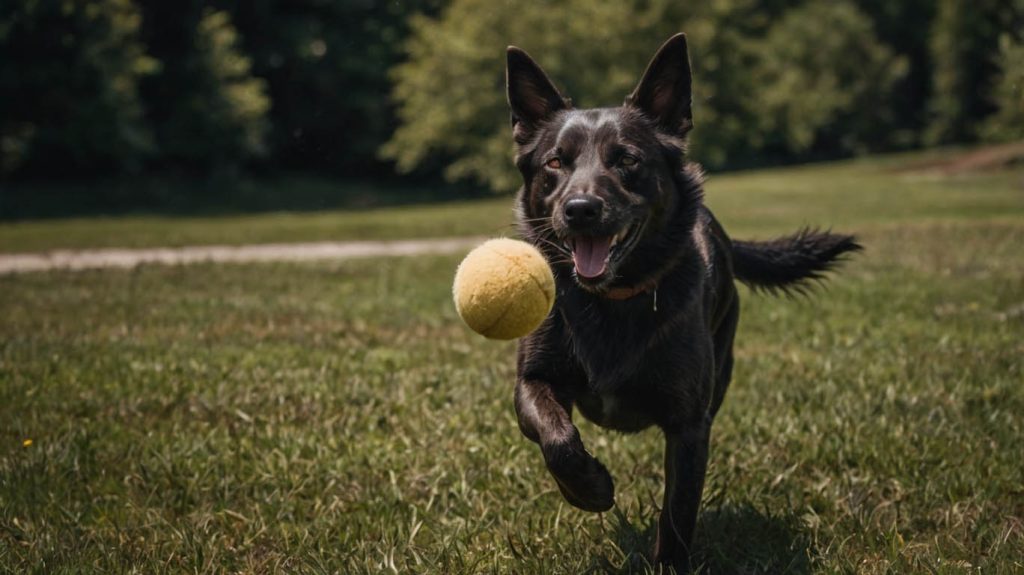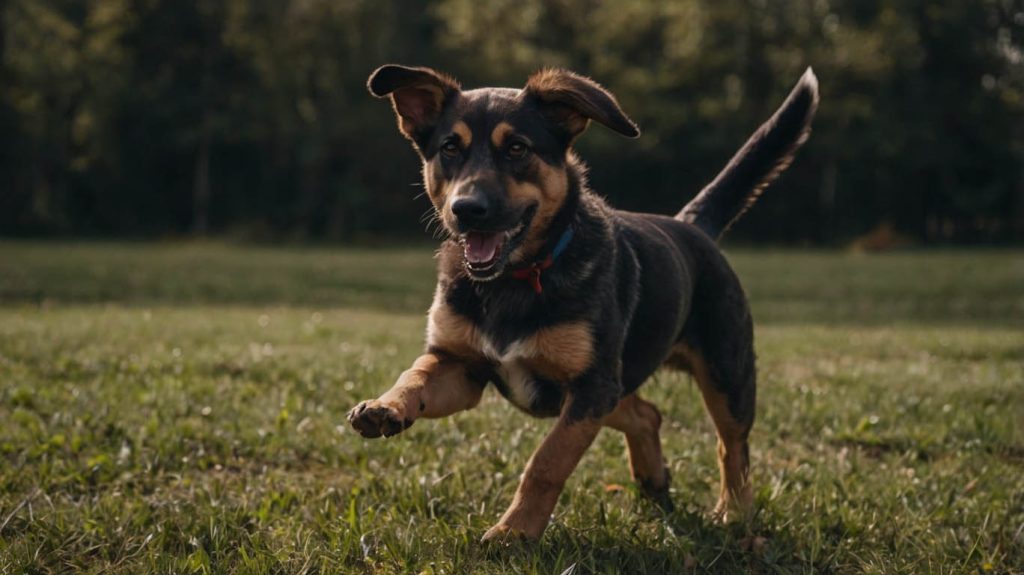We all picture it: you toss a ball, your dog races after it, grabs it, and returns joyfully, tail wagging. But for many owners, fetch turns into a game of chase or ends with the dog lying down with the toy, not returning. That’s where knowing how to teach your dog to fetch and bring back becomes more than helpful—it’s essential.
Let’s begin with a short story that reveals how structured training can turn a frustrating fetch game into a shared success.
Story: How Daisy Learned the Joy of Bringing It Back
Daisy, a lively young Border Collie, loved chasing her ball. But every time her owner, Paul, tossed it, Daisy would grab it and dash away, refusing to bring it back. At first, Paul thought she was being stubborn. But after researching how to teach your dog to fetch and bring back, he discovered that return behavior needed to be trained just like any other command.
Paul introduced a step-by-step method with small goals, positive reinforcement, and patience. Within a few weeks, Daisy went from ball thief to fetch pro, eagerly running back to Paul, ready for the next throw. Their bond deepened, and playtime became a daily joy.

Why It Matters: Benefits of Teaching Fetch and Return
Fetch isn’t just fun. When you train your dog to fetch and bring back, you’re creating structured exercise, improving communication, and reinforcing core commands like “come,” “drop it,” and “leave it.”
Core Benefits of Fetch Training
- Improves off-leash recall in real-world scenarios
- Strengthens obedience and focus
- Burns energy quickly, especially for high-drive breeds
- Deepens trust and connection between dog and handler
- Reduces destructive habits by replacing boredom with fun
Clearly, learning how to teach your dog to fetch and bring back isn’t just about the game—it’s about whole-dog training.
What You Need Before You Start
Before you begin teaching fetch and return, gather the right supplies and set the stage for learning.
- A quiet, distraction-free area like a hallway or fenced yard
- Two toys or balls of equal interest
- Small training treats or clicker (optional)
- Long leash or lead for early recall training
- Tons of praise and enthusiasm
With the right environment and tools, your dog will be more engaged and motivated to learn.
How to Teach Your Dog to Fetch and Bring Back: Step-by-Step Method
Let’s break down the entire fetch and return training into actionable stages.
Step 1 – Build Interest in the Toy
If your dog doesn’t naturally grab toys, build enthusiasm first.
Try This:
- Wiggle the toy across the floor like prey
- Use high-pitched praise when they interact
- Reward with treats or tug when they bite or chase it
This creates motivation and turns the toy into a high-value object.
Step 2 – Teach the “Take It” Command
This step helps your dog understand they’re allowed to grab the toy.
How to Do It:
- Hold the toy and say, “Take it”
- When your dog mouths or grabs it, say “Yes!” or click and treat
- Practice in short bursts
This cue becomes your dog’s signal to engage with the toy.
Step 3 – Toss the Toy a Short Distance
Now we add motion—just a small throw at first.
Tips:
- Toss a few feet away
- Say “Fetch!” as it lands
- If your dog grabs it, cheer and call them back
- Use a long leash if they start to run off
Keep it playful and avoid chasing your dog.
Step 4 – Teach the “Come” or “Bring It” Command
The return is the most overlooked part of fetch. Here’s how to fix it.
Steps:
- Call your dog as they grab the toy: “Come!” or “Bring it!”
- Run backward to encourage pursuit
- Treat and praise as they move toward you
- Even partial returns should be celebrated early on
Avoid pulling the leash or taking the toy forcefully.
Step 5 – Teach the “Drop It” Cue
If your dog won’t give the toy back, it stops the game. Here’s how to solve that.
How to Teach Drop It:
- Offer a treat while saying “Drop it”
- The moment your dog releases, give the treat
- If they resist, offer a second toy as a swap
- Never tug the toy from their mouth—it builds resistance
Practice “drop it” during non-fetch play too for reinforcement.
Step 6 – Link All the Steps Together
With consistency, you’ll blend the sequence into one smooth routine.
Fetch Sequence:
- Say “Fetch!” → Dog runs and grabs
- Say “Bring it!” → Dog returns
- Say “Drop it!” → Dog releases
- Reward, then repeat
Keep sessions short and end on a positive note to maintain enthusiasm.

Real-World Example: Max the Reluctant Retriever
Max, a 2-year-old Labrador mix, had all the energy in the world—but no concept of returning a toy. His owner, Jasmine, used the above method and within 10 days saw progress:
- Day 1–3: Learned “Take it” and chased the toy
- Day 4–6: Used “Bring it” with a long lead
- Day 7–10: Introduced “Drop it” and linked commands
By week three, Max was running full fetch cycles in the backyard. Jasmine’s experience shows that any dog, with the right structure, can learn how to fetch and bring back.
Troubleshooting Fetch Problems
My Dog Won’t Chase the Toy
Solution:
Try a different toy. Some dogs prefer squeaky, plush, or tug toys over hard balls.
My Dog Runs Off with the Toy
Solution:
Use a long lead and gently guide them back. Don’t chase. Reward every time they turn toward you.
My Dog Won’t Drop the Toy
Solution:
Use two toys or offer a high-value treat. Say “Drop it” and trade. Practice outside of fetch sessions too.
My Dog Loses Interest Quickly
Solution:
Keep sessions short (5–10 minutes), praise often, and end before your dog gets bored.
Why Dogs Don’t Always Fetch Naturally
Believe it or not, not all dogs are natural retrievers. Breed instincts play a role, but so do early socialization and individual preference.
Dogs may resist fetch due to:
- Negative past experiences
- Lack of motivation
- Toy disinterest
- Unclear training signals
That’s why knowing how to teach your dog to fetch and bring back step-by-step makes all the difference.
FAQs About How to Teach Your Dog to Fetch and Bring Back
Can any dog learn to fetch and return?
Yes! With the right motivation and technique, all breeds and ages can learn.
How long does fetch training take?
Anywhere from a few days to a few weeks depending on your dog’s background and consistency.
Should I use a clicker?
Clickers are helpful for marking desired behavior but are not essential.
What if my dog doesn’t like toys?
Start with food-based games, then introduce toys with hidden treats inside.
Is fetch safe for puppies?
Yes, but use soft toys and avoid long throws to protect growing joints.
Conclusion: Every Dog Can Learn to Fetch and Return
Mastering how to teach your dog to fetch and bring back is more than a party trick—it’s a foundation for better obedience, connection, and communication. With the right tools, timing, and attitude, you’ll build more than a fetch game—you’ll build trust.
So grab that toy, head to a quiet space, and start step one today. Your dog’s tail-wagging enthusiasm is closer than you think.


